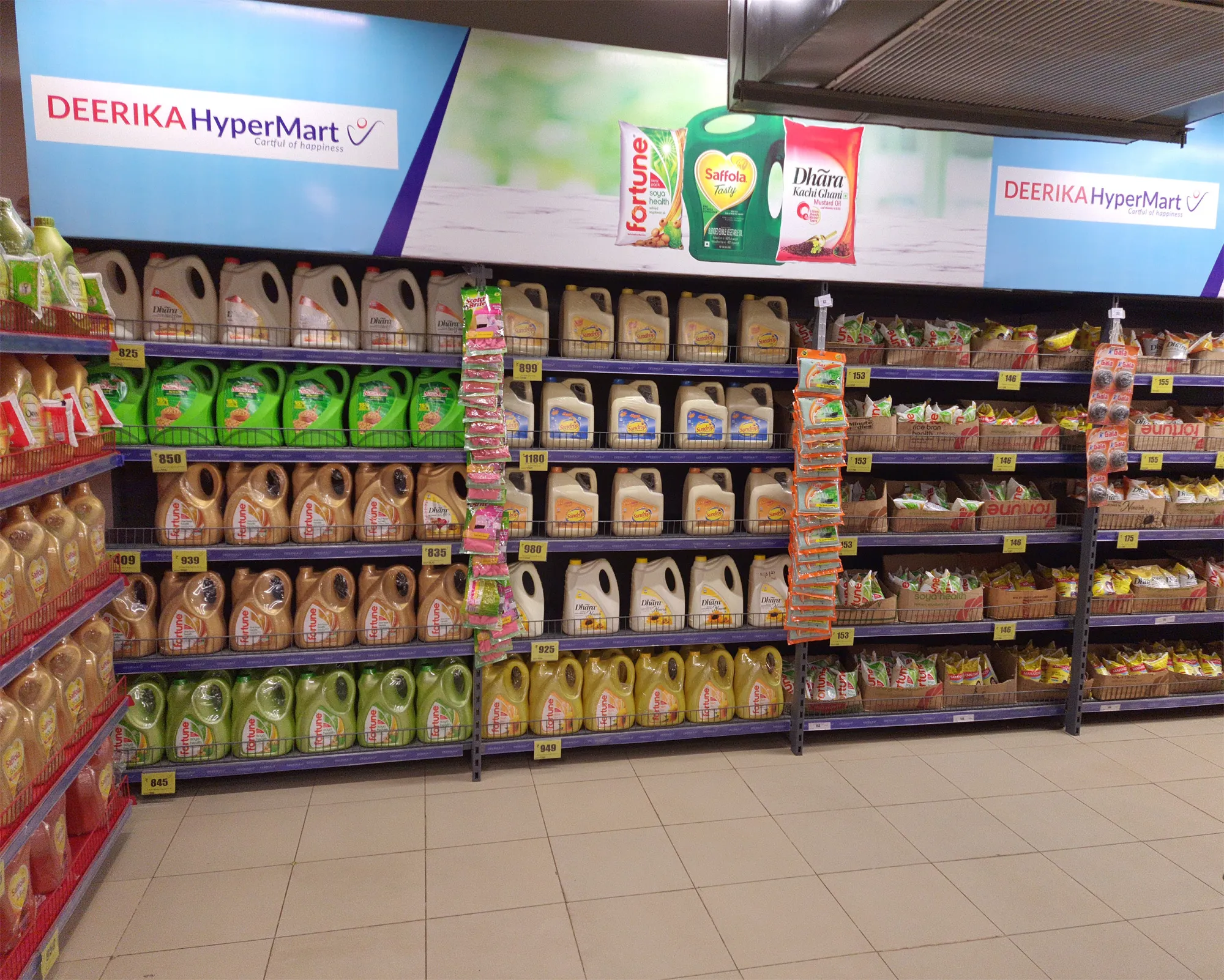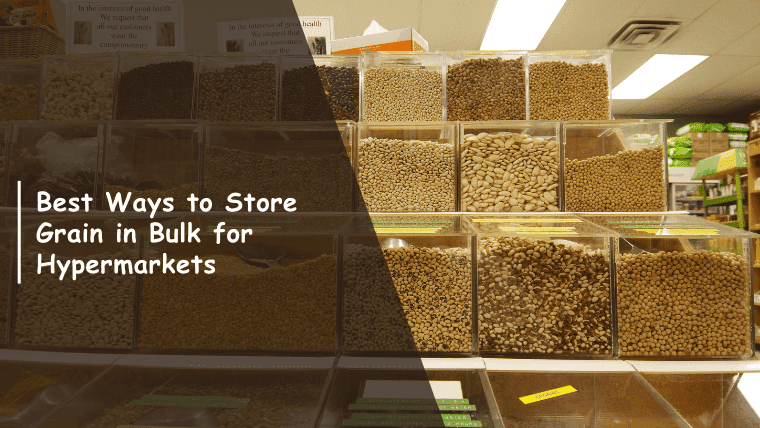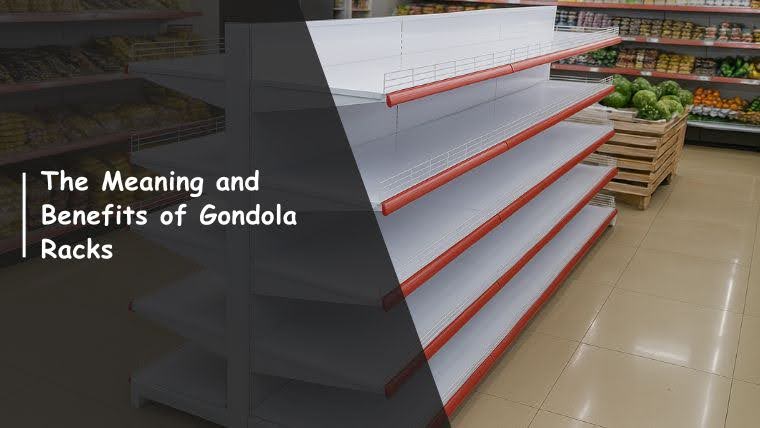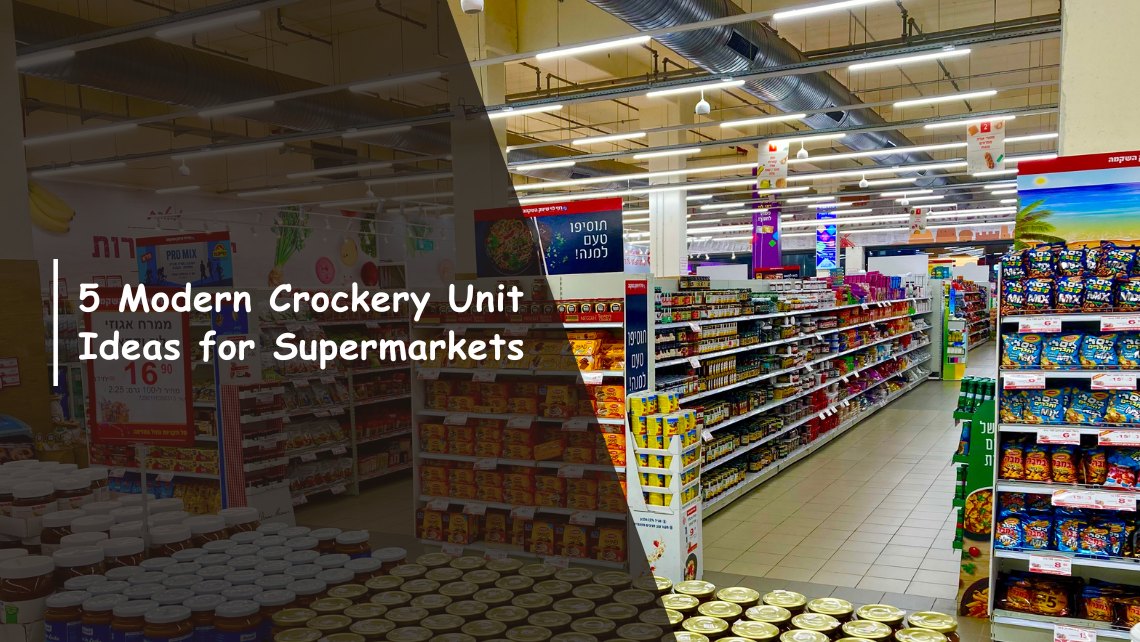14 Key Elements of Effective Retail Store Design
Discover the key elements of store design to create a functional, visually appealing retail space that enhances customer experience and drives sales.

Discover the key elements of store design to create a functional, visually appealing retail space that enhances customer experience and drives sales.

Effective retail store design goes beyond aesthetics; it’s about creating an environment that enhances the customer experience and drives sales. In 2024, India's retail market expanded to ₹82 lakh crore (approximately USD 939.8 billion), reflecting a compound annual growth rate (CAGR) of 8.9% from 2014.
The elements of store design are key to influencing customer behaviour, shaping brand identity, and enhancing operational efficiency. A well-designed store enhances the shopping experience and reflects the brand's values.
This article explores the key elements of retail store design and how they work together to craft an impactful store experience.
Retail store design refers to the planning and arrangement of a retail space, including its layout, structure, and interior aesthetics. This encompasses everything from the store’s floor plan and product displays to its colours, lighting, and fixtures.
Effective store design plays a crucial role in shaping the shopping experience, guiding customers through the space, and creating a memorable atmosphere. It also reinforces the store's brand identity, ensuring it encourages customer engagement.
Now, let’s explore the importance of retail store designs and why they play a crucial role in your store's success.
Retail store design plays a pivotal role in shaping customer perceptions and enhancing the overall shopping experience. A thoughtfully designed store encourages customers to engage with the products, boosts sales, and strengthens brand identity. Here are five reasons why it's crucial:
Also Read: What Is Visual Merchandising? Types and Tips
Given its importance, let’s now look at the strategies that lead to successful retail store design.
Retail store design involves a variety of factors that together create a cohesive environment. Below are the crucial elements to consider:
1. Colour
Colour plays an essential role in shaping the mood and energy of a retail space. Bold, vibrant colours can energise and excite customers, while muted tones can create a relaxing and sophisticated atmosphere.
2. Shelving and Racks
Shelving and racks play a central role in the organisation and visibility of products. The right racks can improve the shopping experience, making it easier for customers to navigate and find what they’re looking for.
Maximise your storage efficiency with Expanda Stand’s Heavy-Duty Racks that provide a durable and organised solution for larger products. Ideal for home appliances, electronics, or grocery stores, they ensure optimal space utilisation while keeping your products easily accessible.
3. Store Layout
A well-thought-out layout determines the flow of the customer journey and guides customers naturally through different sections of the store. There are various layout types, such as grid, loop, or free-flow, each offering different advantages depending on the store’s goals.
4. Size & Scale
The size of the store and the scale of displays must be proportional. Oversized fixtures in a small store can make the space feel cramped, while too many small fixtures in a large space can make it feel empty.
5 .Flexibility
The ability to adapt displays and layout based on seasons, promotions, and changing product ranges is vital. A flexible design allows stores to stay relevant and responsive to customer needs and industry trends.
6. Sustainability
Sustainability in retail design focuses on using eco-friendly materials, energy-efficient lighting, and waste-reducing practices. Customers are increasingly drawn to brands that demonstrate a commitment to sustainability, making it an important consideration in modern store design.
7 .Fixtures
Fixtures are the physical structures used to display products. These can include display tables, stands, racks, or custom furniture. The right fixtures can enhance product visibility and provide a smooth shopping experience.
8. Ceilings
Ceilings are often overlooked but play a vital role in a store’s overall aesthetic. High ceilings can create a sense of openness, while lower ceilings may provide a more intimate atmosphere. The ceiling design should complement the overall look of the store.
9. Flooring
The type of flooring affects both the store’s visual appeal and the customers’ comfort. Flooring must be durable, easy to clean, and safe. For example, carpet may be suitable for fashion stores, while tile or hardwood is better for home goods stores.
10. Traffic Flow
Optimising the traffic flow ensures that customers can easily navigate through the store. Good traffic flow minimises congestion, ensures that products are easily accessible, and encourages customers to explore more areas of the store.
11. Lighting
Lighting can set the tone for a store and influence customer behaviour. Bright lights can energise customers and make the space feel larger, while softer lighting can create a calming, luxurious atmosphere. Lighting should highlight key areas and products in the store.
12. Displays
Product displays are vital to showcasing your merchandise in an engaging way. Well-positioned and well-designed displays capture customers' attention, making them more likely to stop, engage, and make a purchase.
Highlight key products or promotions with Expanda Stand’s End Cap Display Units, designed to attract attention and drive impulse purchases. Perfect for aisles, they ensure your featured items are noticed, creating an engaging focal point for customers.
13. Checkout Area
The checkout area is a crucial part of the retail design, as it’s the final interaction customers have before making a purchase. This area should be functional, with enough space for queuing, while offering impulse-buy products to encourage last-minute purchases.
14. Style
The overall style of a store should align with its brand identity. Whether minimalist, vintage, or contemporary, the style of the store sets the tone for the customer experience. The style should flow consistently across all elements, including furniture, signage, and decor.
Given its importance, let’s now look at the strategies that lead to successful retail store design.
Here are some key strategies to ensure your retail store design is effective and engaging:
1. Craft a Strong Retail Brand Identity
A store’s design should reflect its brand’s values, mission, and aesthetics. This includes using specific colours, signage, and design elements that communicate the brand message to customers.
2. Design for Efficient Store Layout and Flow
The store layout should guide customers through the space, creating a natural path that encourages exploration and purchase. Consider how customers will move through your store and design with their journey in mind, avoiding bottlenecks and confusion.
3. Use Visual Merchandising Effectively
Visual merchandising is the art of arranging products in a visually appealing way to draw customers in. Creative displays can encourage impulse buys and increase sales. Regularly refresh your displays to keep them exciting and relevant to current trends or promotions.
4. Get the Lighting Right
Lighting can dramatically affect the ambiance of a store. Bright lighting works well in fashion stores to energise customers, while softer lighting creates a relaxed atmosphere in beauty stores.
Enhance your beauty or health store with Expanda Stand’s Cosmetic Display Racks, designed to showcase products elegantly. Our displays improve visibility and engage customers, encouraging them to explore your full product range and boost sales.
5. Make a Lasting Impression with Your Storefront
The storefront is the first thing customers see. A well-designed storefront creates curiosity and invites customers into the store. Use striking window displays and clear signage that highlight new or seasonal products.
6. Prioritise Customer Comfort
Comfort is key to creating a positive shopping experience. Ensure that the store is accessible, well-lit, and easy to navigate. Offer comfortable seating, adequate space for movement, and temperature control to enhance customer comfort.
7. Integrate Technology
Incorporate digital elements like interactive kiosks, digital price tags, or augmented reality displays to engage customers in new and exciting ways. Ensure technology integrates smoothly into the store design without disrupting the physical experience.
8. Set the Mood with Music and Scent
Background music and scent can have a significant impact on the customer’s mood and shopping behaviour. Use them strategically to create the right atmosphere. Choose calming music and subtle scents that complement your store’s vibe without overwhelming customers.
9. Build a Sustainable Design
Sustainability is becoming increasingly important to customers. Using eco-friendly materials and energy-efficient lighting reduces costs and appeals to environmentally conscious shoppers.
10. Take Advantage of Flexibility and Adaptability
Retail environments need to upgrade constantly to keep up with trends and seasons. Use modular display systems that allow you to change product layouts and displays easily. Design your store layout with flexibility in mind, using moveable fixtures and adjustable shelving to adapt to changes.
11. Ensure Accessibility for All Customers
Ensure your store is accessible to everyone, including people with disabilities. This includes wide aisles, lower shelves, and clear signage. Follow accessibility standards to ensure your store is welcoming for all customers.
12. Provide Staff Training and Support
Well-trained staff are crucial to providing an excellent in-store experience. Ensure that employees are familiar with the store layout and product displays to assist customers effectively.
13. Engage with the Community
Incorporate local culture and community values into the store design to make customers feel more connected to your brand. Host local events or feature local artists to create a sense of community in your store.
14. Integrate Online and Offline Experiences
Create a simply shopping experience by integrating your online presence with your in-store experience. This can include click-and-collect services, QR codes for product details, and online-exclusive offers.
15. Use Colour Psychology
Colour can influence mood and decision-making. Use colours strategically in your store design to evoke the right emotions and behaviours. Choose colours that align with your brand’s identity and the emotional response you want to evoke from your customers.
Also Read: Understanding Store Design Principles and Ideas
Now, let’s take a closer look at how Expanda Stand’s solutions can elevate your store design and create a visually appealing environment.
Effective retail store design is about more than just aesthetic appeal—it's about creating an environment that engages customers, enhances the shopping experience, and maximises sales
Here’s how Expanda Stand’s solutions align with the key elements of retail store design:
1. Shelving and Layout for Grocery and FMCG Products
In supermarkets and grocery stores, Gondola Shelving for Supermarkets offers flexible, space-efficient solutions that allow for easy product access and organisation. These adjustable shelving units help maintain a clean, orderly layout while enhancing the customer’s shopping journey.
2. Attractive Displays for Health and Beauty Stores
For stores selling beauty and wellness products, Cosmetic Displays offer a sleek, functional design to highlight skincare, makeup, and personal care products. Placing these displays in high-traffic areas ensures products are easily accessible and engaging, enhancing the overall store atmosphere.
3. Organised Fashion and Apparel Spaces
Garment Browsers and Display Stands are perfect for fashion retail, making clothing easy to browse while also allowing for elegant product presentation. These solutions help maximise space while ensuring your store remains stylish and functional.
4. Efficient Use of Space for Home Appliances and Electronics
For stores offering larger items like home appliances, TV Display Racks and Washing Machine Display Podiums provide an organised and visually appealing way to showcase these products.
5. Simplified Storage and Accessibility in Home Improvement Stores
In hardware or home improvement stores, Pipes Storage Racks, Sanitaryware Displays, and Power Tools Shelving help organise and present tools, materials, and accessories efficiently.
6. Optimised Pharmacy Racks
Our pharmacy display racks, designed for medicines, supplements, and health products, provide clear visibility, easy restocking, and a clutter-free display that improves the customer experience.
By incorporating Expanda Stand’s tailored retail solutions, you can optimise your store layout, improve product visibility, and create an engaging shopping environment that encourages customers to explore and purchase.
The elements of store design are essential in creating an engaging, functional, and efficient retail environment. From colour schemes and layout to product displays and customer comfort, each element contributes to the overall shopping experience.
By focusing on key strategies like visual merchandising, lighting, and flexibility, retailers can optimise their space and create an environment that resonates with customers.
At Expanda Stand, we provide innovative retail design solutions that enhance every aspect of your store layout. From clothing stores to electronic stores, we offer tailored rack solutions that maximise space, improve visibility, and elevate the shopping experience.
Reach out to us today to discover how our retail design solutions can transform your store and boost customer satisfaction.
1. How does the store layout affect customer behaviour?
The layout directs customer flow, encouraging them to explore different sections and interact with products. A well-planned layout enhances accessibility and promotes higher sales.
2. What role does lighting play in retail store design?
Lighting highlights key areas and products, creating the right ambiance. Proper lighting can enhance product visibility and guide customers toward promotions or featured products.
3. Why is flexibility important in retail store design?
Flexibility allows a store to adapt quickly to changing products, seasons, or promotions. It ensures the store remains relevant and responsive to customer preferences and market trends.
4. What are the best shelving solutions for grocery and FMCG stores?
Gondola Shelving is ideal for grocery stores as it provides flexible, adjustable storage, optimising space and offering easy access to products while maintaining a neat and organised layout.
5. How does sustainability impact retail store design?
Sustainable design, using eco-friendly materials and energy-efficient systems, appeals to environmentally-conscious consumers. It enhances brand image and can reduce long-term operational costs.




Ready to Upgrade Your Process Operations?